How to Grow & Care for Dahlias Flower
Written by Iris
Dec 29 2022
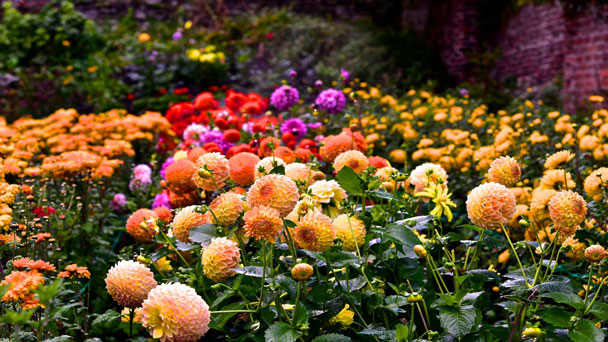
Dahlia is a tuberous plant belonging to the Asteraceae family. Dahlias come in a variety of colors and sizes, from tiny two-inch lollipop pompoms to giant 15-inch trays. Most species grow to 4 to 5 feet tall.
Dahlias thrive in rich, well-drained soil. Soils should have a pH of 6.5-7.0 and be slightly acidic.
If you have heavier soil, add sand, peat moss or aged fertilizer to lighten and loosen the texture of the soil for better drainage.
Large dahlias and those planted specifically for cut flowers are best planted in separate rows in dedicated plots, free from competition from other plants. Dahlias of medium to low height mix well with other summer flowers. If you only have a vegetable garden, it is the ideal place to place a row of dahlias for cutting.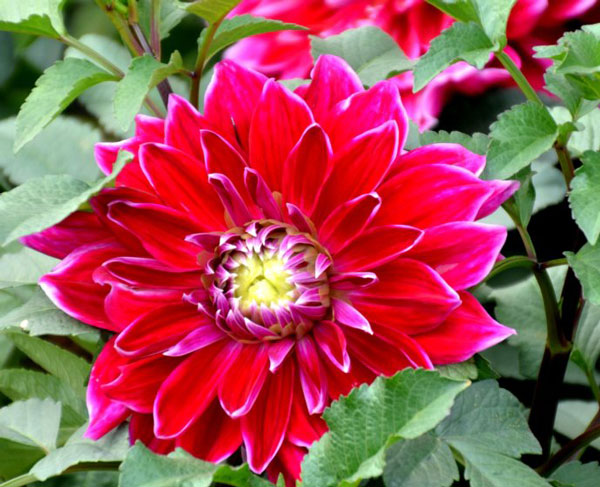
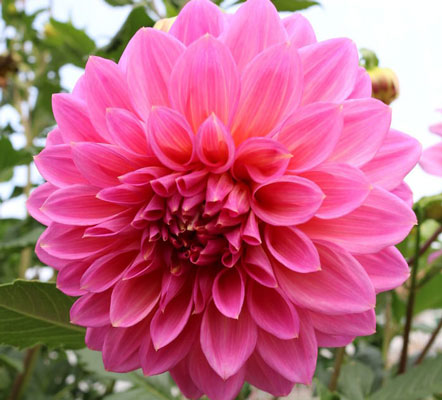
Dahlia seeds should be sown between February and April undercover. Sow 0.5cm deep in trays of moist compost. Place in a warm position, about 15-20°C (60-68°F). Keep moist.
Transplant seedlings to deeper trays or individual small pots when large enough to handle.
Grow on in cooler, but frost-free conditions. Gradually harden off young plants before planting out after the risk of frost has passed in May and June.
After the cuttings have been dipped in rooting hormone and placed in the rooting medium (either sterile soil or sterile rooting cubes) they should be placed in a humid environment until well rooted. The humidity should be high enough to keep the cuttings from wilting, but not so great as to add moisture to the rooting medium. The rooting medium should be kept damp, but not saturated. Light misting with a sprayer can help increase the humidity if it is necessary. The temperature of the air surrounding the cuttings and of the growing medium itself should be kept between 65 to 75 degrees.
Dahlias are photosensitive, and this fact is often overlooked in the process of taking cuttings. Most varieties of dahlias will develop tubers when the day length is 12 hours or less, and will develop feeder roots when the day length is longer than 12 hours. To assure that feeder roots develop, I recommend rooting cuttings with the day length artificially set to 14 hours or longer. The intensity of light necessary to initiate the chemical reaction, which tells the plant “how long the days are”, is not, the same intensity required for plant growth. It is only necessary to provide 10-20 foot-candles of light during this period. A fluorescent 40-watt bulb, or incandescent 100-watt bulb, 4 to 5 feet above the cutting bed is sufficient. If you are rooting cuttings indoors, and are already supplying a stronger intensity of light necessary for growth period, then just leave the source of light on for at least 14 hours a day. If you are taking cuttings in a greenhouse or outside, then supplement the natural daylight with additional light so that the total length of light is 14 hours or greater.
In early April, you can put all of your tubers in a large, shallow tray, lightly covered with compost, for potting up a little later. Alternatively, pot each tuber up individually, in a large plastic pot filled with multi-purpose potting compost. Position the tuber the right way up (look for the old stem, or a new shoot – this is the top) and position it so that it sits just below the soil surface. Water in well, allowing any excess water to drain away.
Put the tubers in a light, frost-free place (such as a greenhouse, cold frame, porch or windowsill) and keep the compost moist. New shoots should start to form about five weeks after planting. They will have formed bushy plants by the time the frosts have ended in May.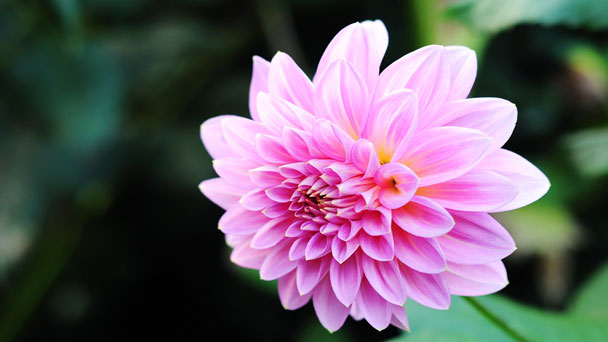
Timing is especially important when it comes to planting and growing dahlias, as they'll struggle to establish in cold soil. Wait until your final spring frost has passed and the ground temperatures have reached around 60 degrees Fahrenheit. Additionally, dahlias like humidity when being stored as tubers, but require no additional humidity in their environment when growing throughout the spring and summer outdoors.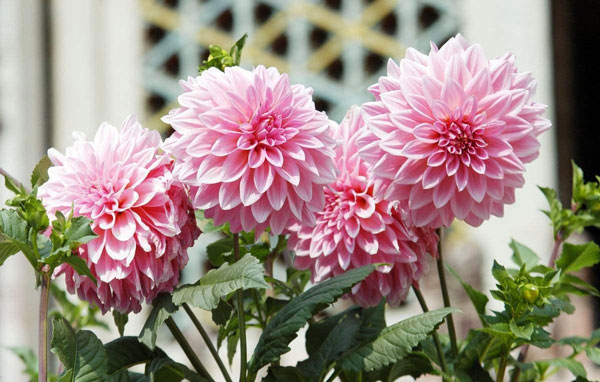
Second is disbudding. Remove the outer two buds from the three that develop at the end of each branch. While that reduces the total number of flowers, many flowers remain and those show up well on the plant. If all three buds are left on the stem, the blooms will tend to be covered up and can be lost in the plant. You can also remove some of the shoots that form along the branch to have stems that can be used in tall vases for elegant bouquets.
Spider mites: Look for these pests on the underside of leaves. If you find them, wipe down the leaves with a sponge soaked in plain water or spray with Neem. You can also spray the leaves with a mixture of water and mild dishwashing soap if you prefer.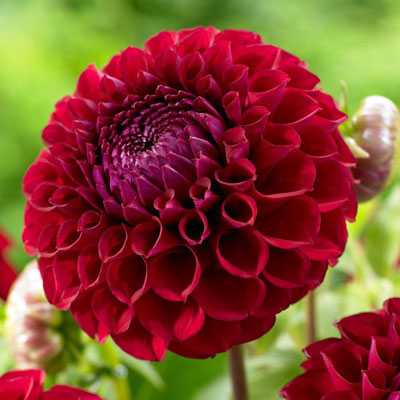
Top 10 Most Beautiful Roses in the World
Top 10 Most Beautiful Flowers in the World
26 Best Autumn Flowers to Plant for Fall Color in Garden
Where to Grow DahliasWhen to Grow DahliasHow to Grow DahliasDahlias Propagation with SeedsDahlias Propagation with Stem CuttingsDahlias Propagation with TubersHow to Care for DahliasDahlia Light RequirementsDahlia Soil CareDahlia WateringDahlia FertilizerDahlia PruningDahlia Pests & Diseases CareVarieties of Dahlias
Where to Grow Dahlias
Choose a sunny planting site. Dahlias bloom more when they get six to eight hours of direct sunlight. They like the morning sun best. Choose a shelter from the wind.Dahlias thrive in rich, well-drained soil. Soils should have a pH of 6.5-7.0 and be slightly acidic.
If you have heavier soil, add sand, peat moss or aged fertilizer to lighten and loosen the texture of the soil for better drainage.
Large dahlias and those planted specifically for cut flowers are best planted in separate rows in dedicated plots, free from competition from other plants. Dahlias of medium to low height mix well with other summer flowers. If you only have a vegetable garden, it is the ideal place to place a row of dahlias for cutting.

When to Grow Dahlias
Don't be in a hurry to plant; dahlias will struggle in cold soil. Ground temperature should reach 60°F. Wait until all danger of spring frost is past before planting. (We plant them a little after the tomato plants go in.) Some gardeners start tubers indoors in containers a month ahead to get a jump on the season. Medium to dwarf-size dahlias will do well in containers. Order dahlia tubers in early spring. This gives gardeners in colder zones time to get them growing in a sunny window. Or, skip the potting and simply plant the tubers in the ground after the spring weather has settled and the soil has warmed.
How to Grow Dahlias
Dahlias can be propagated from seeds, tubers, or cuttings.Dahlias Propagation with Seeds
Dahlias are commonly started into growth as tubers, as this is a faster and often more reliable way to grow them, but it is possible to grow dahlias from seed.Dahlia seeds should be sown between February and April undercover. Sow 0.5cm deep in trays of moist compost. Place in a warm position, about 15-20°C (60-68°F). Keep moist.
Transplant seedlings to deeper trays or individual small pots when large enough to handle.
Grow on in cooler, but frost-free conditions. Gradually harden off young plants before planting out after the risk of frost has passed in May and June.
Dahlias Propagation with Stem Cuttings
Success with cuttings depends largely upon the proper manipulation of three environmental conditions: humidity, temperature and day lengthAfter the cuttings have been dipped in rooting hormone and placed in the rooting medium (either sterile soil or sterile rooting cubes) they should be placed in a humid environment until well rooted. The humidity should be high enough to keep the cuttings from wilting, but not so great as to add moisture to the rooting medium. The rooting medium should be kept damp, but not saturated. Light misting with a sprayer can help increase the humidity if it is necessary. The temperature of the air surrounding the cuttings and of the growing medium itself should be kept between 65 to 75 degrees.
Dahlias are photosensitive, and this fact is often overlooked in the process of taking cuttings. Most varieties of dahlias will develop tubers when the day length is 12 hours or less, and will develop feeder roots when the day length is longer than 12 hours. To assure that feeder roots develop, I recommend rooting cuttings with the day length artificially set to 14 hours or longer. The intensity of light necessary to initiate the chemical reaction, which tells the plant “how long the days are”, is not, the same intensity required for plant growth. It is only necessary to provide 10-20 foot-candles of light during this period. A fluorescent 40-watt bulb, or incandescent 100-watt bulb, 4 to 5 feet above the cutting bed is sufficient. If you are rooting cuttings indoors, and are already supplying a stronger intensity of light necessary for growth period, then just leave the source of light on for at least 14 hours a day. If you are taking cuttings in a greenhouse or outside, then supplement the natural daylight with additional light so that the total length of light is 14 hours or greater.
Dahlias Propagation with Tubers
Dahlia tubers are available to buy from February. Most garden centres have a good selection but for the best range, buy online.In early April, you can put all of your tubers in a large, shallow tray, lightly covered with compost, for potting up a little later. Alternatively, pot each tuber up individually, in a large plastic pot filled with multi-purpose potting compost. Position the tuber the right way up (look for the old stem, or a new shoot – this is the top) and position it so that it sits just below the soil surface. Water in well, allowing any excess water to drain away.
Put the tubers in a light, frost-free place (such as a greenhouse, cold frame, porch or windowsill) and keep the compost moist. New shoots should start to form about five weeks after planting. They will have formed bushy plants by the time the frosts have ended in May.

How to Care for Dahlias
Dahlia Light Requirements
In order to flower well, dahlias need full sun, preferably at least six to eight hours a day. In hotter climates (primarily USDA zones 8 and up) they will do better with a bit of shade during the peak afternoon hours, when the sun is especially hot and therefore can risk burning the plants.Dahlia Soil Care
Dahlias grow best in moist, well-drained soil with full morning sun, afternoon shade and protection from winds. Before planting, improve the soil by digging in well-rotted organic matter such as compost, leaf mould and manure. Stake tall growers at planting so you don't damage the tuber. They thrive in moist, cool and warm climates.Dahlia Watering
As with most plants, watering amounts and frequency vary depending on soil, weather, and plant size. In general, don't water tubers until they sprout above the ground, then water about two times a week. Allow the soil to dry out and then give them a deep soak. Near the end of the season when it's the hottest and the plants are larger, you can increase watering a bit. "Let them grown and just check-in. They will tell you when they need something.Temperature and HumidityTiming is especially important when it comes to planting and growing dahlias, as they'll struggle to establish in cold soil. Wait until your final spring frost has passed and the ground temperatures have reached around 60 degrees Fahrenheit. Additionally, dahlias like humidity when being stored as tubers, but require no additional humidity in their environment when growing throughout the spring and summer outdoors.

Dahlia Fertilizer
Luckily dahlias are not demanding, but Rowe recommends using a balanced fertilizer (10-10-10 or 15-15-15) and feeding the plants once per year. "If you use a lower strength fertilizer, you'll want to feed them twice if they look like they need it," she says. What does a hungry dahlia look like? Typically the leaves look yellow. Rowe also recommends waiting until the plant is about 10 inches tall to fertilize.Dahlia Pruning
There is a substantial regimen that can be used for maintaining plants for show blooms. For the simple enjoyment of spectacular dahlias in your garden, there are two relatively simple actions that will enhance the appearance of the plant. First is tying the plant to the stake several times as it grows. The first tie should secure the lower portion of the plant’s stalk to the stake. Subsequent ties should secure the branches. A simple alternative to tying is to use a tomato cage to support the plant. Then, no tying may be required.Second is disbudding. Remove the outer two buds from the three that develop at the end of each branch. While that reduces the total number of flowers, many flowers remain and those show up well on the plant. If all three buds are left on the stem, the blooms will tend to be covered up and can be lost in the plant. You can also remove some of the shoots that form along the branch to have stems that can be used in tall vases for elegant bouquets.
Dahlia Pests & Diseases Care
Some of the pests you need to be on the lookout for include aphids, slugs, snails, borers, leafhoppers, and spider mites. If you find any of these, these tips will help you get rid of them.- Aphids
- Slugs
- Borers
- Leafhoppers
Spider mites: Look for these pests on the underside of leaves. If you find them, wipe down the leaves with a sponge soaked in plain water or spray with Neem. You can also spray the leaves with a mixture of water and mild dishwashing soap if you prefer.

Varieties of Dahlias
There are about 60,000 named varieties and 18 official flower forms including cactus, peony, anemone, stellar, collarette, and waterlily. The American Dahlia Society recognizes 15 different colors and color combinations. Here are some popular choices:- ‘Bishop of Llandaff’: small, scarlet, intense flowers with handsome, dark-burgundy foliage
- ‘Miss Rose Fletcher’: an elegant, spiky, pink cactus plant with 6-inch globes of long, quilled, shell-pink petals
- ‘Bonne Esperance’, aka ‘Good Hope’: a foot-tall dwarf that bears 1-½-inch, rosy-pink flowers all summer that are reminiscent of Victorian bedding dahlias (though it debuted in 1948)
- ‘Kidd’s Climax’: the ultimate in irrational beauty with 10-inch “dinnerplate” flowers with hundreds of pink petals suffused with gold
- ‘Jersey’s Beauty’: a 7-foot tall pink plant with hand-size flowers that brings great energy to the fall garden.
Top 10 Most Beautiful Roses in the World
Top 10 Most Beautiful Flowers in the World
26 Best Autumn Flowers to Plant for Fall Color in Garden
Latest Updated
- Benefits of Bugleweed - 7 Science-backed Health Benefits
- Bugleweed Dangers & Side Effects - Is It Poisonous?
- How to Plant Evergreen Trees - What You Should Know
- When to Plant Evergreens - Grow Guide for Evergreen Trees
- 12 Wonderful Evergreen Shrubs for Your Garden
- 12 Popular Evergreen Plants with Pictures for Beginners
- When And How To Prune A Lilac Bush Like a Pro
- How to Grow & Care for Lilac Vine (Hardenbergia Violacea)
- Japanese Lilac Tree (Syringa Reticulata) Care & Propagation Guide
- Shumard Oak Pros and Cons - What to Know
Popular Articles
- Winter maintenance of Antirrhinum Majus
- How to Grow Terminalia Mantaly Tree
- How to Grow and Care for Crossostephium Chinense
- How to grow Antirrhinum Majus in spring
- Peristeria Elata (Dove Orchid) Profile: Info & Care Guide
- Underwatered Snake Plant (Sansevieria Trifasciata) - Signs And How To Fix
- How to Care for Brazilian Jasmine Plant (Mandevilla Sanderi)
- How to Grow & Care for Graptopetalum Purple Delight in Summer
- Rosa Chinensis (China Rose): Plant Growing & Care Tips
- How to Care for Baby Sun Rose (Aptenia Cordifolia)